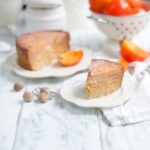Are you wondering which icing is best for decorating cakes? Whether you’re a beginner or experienced cake decorator, choosing the right icing can make all the difference in the outcome of your masterpiece.
With so many options to choose from, it can be overwhelming to decide which icing will work best for your specific cake decorating needs. In this article, we will explore the different types of icing commonly used for decorating cakes and provide insights into their unique qualities and uses.
When it comes to cake decorating, the type of icing you use can drastically impact the overall look and taste of your creation. From classic buttercream to rich ganache, each type of icing offers its own set of benefits and challenges. By understanding the characteristics of each option, you’ll be better equipped to make an informed decision when selecting the best icing for your cake decorating projects.
In addition to discussing various types of icing, we will also provide tips for choosing the best option based on factors such as design complexity, flavor preferences, and climate conditions. Whether you’re aiming for a smooth and elegant finish or intricate designs that require precise detailing, there’s an ideal icing for every cake decorating vision. So let’s dive into the world of cake decorating and explore the endless possibilities that different icings have to offer.
Buttercream Icing
One of the great things about buttercream icing is its ability to hold its shape well, making it perfect for creating elaborate decorations such as roses, swirls, and borders on cakes. Additionally, it can easily be colored using food coloring gels or powders to achieve vibrant hues that are perfect for themed or special occasion cakes. The soft texture of buttercream also makes it a great option for creating textured finishes on cakes like ruffles or waves.
Another benefit of using buttercream icing for decorating cakes is its delicious taste. The rich and creamy flavor pairs well with a variety of cake flavors, making it a popular choice for many decorators. Whether you’re looking for a classic white vanilla buttercream or a rich chocolate variation, there’s a buttercream recipe to suit every taste.
When considering which icing is best for decorating cakes, buttercream certainly deserves a place on the list. Its versatility, ease of use, and delicious flavor make it a go-to choice for both amateur and professional decorators alike.
Royal Icing
What Is Royal Icing?
Royal icing is a popular choice for cake decorating due to its smooth and hard finish once it sets. It is made from egg whites or meringue powder, powdered sugar, and flavorings such as vanilla or almond extract. The consistency of royal icing can be adjusted to either a stiff consistency for intricate designs or a flooding consistency for creating smooth, flat surfaces.
Uses of Royal Icing
One of the main reasons why royal icing is a versatile option for decorating cakes is its ability to create intricate designs and decorations. It can be used for piping intricate lace designs, delicate flowers, and other detailed embellishments on cakes. In addition to being used as an adhesive for attaching edible decorations such as flowers or small fondant pieces, royal icing can also be used to create 3D decorations such as gingerbread houses or ornate cookie decorations.
Pros and Cons of Royal Icing
One of the major advantages of using royal icing for cake decorating is its long shelf life once it sets. This makes it ideal for creating decorations in advance and storing them until needed.
However, royal icing can be difficult to work with for beginners due to its quick drying time, so it requires some practice to achieve the desired results. Additionally, because it contains raw egg whites, there may be concerns about food safety for those with compromised immune systems.
Whether you are looking to create intricate details or add three-dimensional decorations to your cakes, royal icing offers a traditional and versatile option that allows you to take your cake decorating skills to new heights.
Fondant
When it comes to cake decorating, fondant is a popular choice for creating unique and intricate designs. This smooth and pliable icing is perfect for covering cakes, creating 3D decorations, and achieving a flawless finish on your baked creations. Fondant is made from sugar, water, and gelatin, giving it a malleable consistency which makes it ideal for shaping into various designs and patterns.
One of the main advantages of using fondant for cake decorating is its versatility. Fondant can be dyed with food coloring to achieve the desired color scheme for your cake design. It can also be rolled out thinly to create delicate details such as flowers, ribbons, and lace patterns. Additionally, fondant provides a smooth canvas which allows decorators to create precise and detailed designs that may be difficult to achieve with other types of icing.
Another benefit of using fondant is its ability to preserve the freshness of the cake. The firm covering created by fondant acts as a barrier, preventing air from reaching the cake and helping to keep it moist for longer periods. This makes fondant an excellent choice for special occasion cakes that need to be prepared in advance without compromising on taste or texture.
Cream Cheese Icing
Benefits of Cream Cheese Icing
One of the main benefits of cream cheese icing is its creamy and slightly tangy flavor, which complements the sweetness of most cakes. It is also relatively easy to work with, making it a popular choice for both amateur and professional bakers. Cream cheese icing also holds up well in warm weather, making it a great option for outdoor events or summer celebrations.
Decorating With Cream Cheese Icing
Cream cheese icing can be used to create various decorative elements on cakes, cupcakes, and other sweet treats. Its smooth texture makes it ideal for piping intricate designs such as flowers, swirls, or borders. Additionally, cream cheese icing can be easily tinted with food coloring to achieve the desired color palette for your cake decorating project.
Overall, cream cheese icing offers a unique flavor profile and versatility when it comes to cake decorating. Whether you’re looking to add a touch of tanginess to your dessert or create intricate designs on your cakes, this creamy option is definitely worth considering when deciding which icing is best for your decorating needs.
Ganache
When it comes to cake decorating, ganache is a rich and elegant choice that can take your creations to the next level. Made from a combination of chocolate and cream, ganache has a smooth and luxurious texture that is perfect for creating a sleek and polished finish on cakes. It is versatile enough to be used as both a filling and an icing, making it a popular choice among professional bakers and home decorators alike.
One of the main advantages of using ganache for cake decorating is its ability to hold its shape well, making it ideal for creating intricate designs and decorations. Whether you want to pipe delicate swirls or create sharp edges on your cake, ganache provides the perfect canvas for your artistic vision. Additionally, ganache can be easily colored with gel food coloring, allowing you to achieve a wide range of hues for your decorative elements.
Another benefit of using ganache for cake decoration is its delicious taste. The combination of high-quality chocolate and cream results in a decadent flavor that pairs well with a variety of cake flavors. Whether you are working with vanilla, chocolate, or fruit-flavored cakes, ganache provides a rich and indulgent complement that will leave your guests coming back for more.
| Pros | Cons |
|---|---|
| Smooth and luxurious texture | May not hold up well in warm temperatures |
| Versatile – can be used as both filling and icing | Requires some skill to achieve the perfect consistency |
| Easily colored with gel food coloring | High-quality chocolate can be expensive |
Whipped Cream Icing
When it comes to cake decorating, choosing the right icing is crucial to achieving the desired look and taste of your creation. Whipped cream icing is a popular choice for those looking for a light and airy option that adds a delicate touch to their cakes. This type of icing is perfect for those who prefer a lighter and less sweet option compared to other types of icings.
One of the advantages of using whipped cream icing is its light and fluffy texture, which makes it ideal for creating beautifully piped designs on cakes. Its smooth consistency also allows for easy spreading, making it suitable for both simple decorations and more intricate designs. Additionally, whipped cream icing pairs well with various cake flavors, making it a versatile option for decorating different types of cakes.
Despite its many advantages, whipped cream icing does have some limitations. It is not as stable as other types of icings, such as buttercream or fondant, which can make it challenging to use in warm or humid environments. It is also best used on cakes that will be served immediately or refrigerated shortly after decoration to maintain its texture and shape.
Overall, whipped cream icing offers a light and airy option for cake decorating, adding a delicate touch to any confection. Whether you’re looking to create simple swirls or more elaborate designs, this type of frosting can elevate the look and taste of your cakes in a way that suits a wide range of tastes and occasions.
- Light and fluffy texture
- Ideal for piping and spreading
- Suitable for various cake flavors
- Challenges in warm/humid environments
- Best used on cakes served immediately or refrigerated
Comparing the Different Icings
When it comes to decorating cakes, choosing the right icing is crucial. Each type of icing has its own unique characteristics that make it suitable for different cake decorating needs. Let’s take a closer look at the pros and cons of each option to help you make an informed decision for your next cake project.
Buttercream icing is a classic choice for decorating cakes. It is smooth, creamy, and easy to work with, making it perfect for piping borders, flowers, and other intricate designs. However, buttercream can be quite sweet and may not hold up well in warm temperatures.
Royal icing is another popular option which is versatile and dries to a hard finish, making it ideal for intricate designs such as lacework or brush embroidery. On the downside, royal icing can be brittle once dry, so transporting cakes decorated with this type of icing can be a bit more challenging.
Fondant is known for its ability to create unique and intricate designs. It has a smooth finish and can be rolled out to cover an entire cake or used to create figurines and other decorations. However, some people find fondant to be too sweet or overly chewy when eaten, which could affect the overall enjoyment of the cake.
| Icing Type | Pros | Cons |
|---|---|---|
| Buttercream | Smooth and creamy texture; easy to pipe intricate designs | Can be quite sweet; may not hold up well in warm temperatures |
| Royal Icing | Versatile; dries hard for intricate designs | Can be brittle once dry; challenging to transport |
| Fondant | Creates unique and intricate designs; smooth finish | Can be too sweet or chewy when eaten |
Tips for Choosing the Best Icing for Your Cake Decorating Needs
When choosing the best icing for your cake decorating needs, it’s important to consider the type of design you want to create, as well as the flavor and texture you desire. Here are some tips to help you make the right decision:
- Consider the type of design: If you’re looking to create intricate and detailed designs on your cake, fondant or royal icing may be the best options. Fondant can be rolled out and shaped into various designs, while royal icing can be piped into delicate patterns.
- Think about flavor: Different icings offer different flavors, so it’s important to choose one that complements the flavor of your cake. Buttercream and cream cheese icing are popular choices for their rich and creamy taste, while whipped cream icing offers a light and airy flavor.
- Texture matters: The texture of the icing is also important when considering your cake decorating needs. If you want a smooth and flawless finish, fondant is a great option. However, if you prefer a more rustic look, buttercream or ganache may be better suited to your needs.
Ultimately, the best icing for decorating cakes will depend on your personal preferences and the specific requirements of your cake project. It’s also worth experimenting with different types of icings to see which one works best for you. By considering design, flavor, and texture, you can make an informed decision that will result in beautifully decorated cakes every time.
Conclusion
In conclusion, when it comes to choosing the best icing for decorating cakes, it ultimately depends on the specific needs and preferences of the baker. Each type of icing has its own unique qualities and suitability for different cake decorating projects.
Buttercream icing is a classic choice that offers versatility and great flavor, while royal icing is known for its ability to create intricate designs and decorations. Fondant is perfect for creating sculpted or themed cakes, while cream cheese icing offers a deliciously creamy option with a tangy kick.
Furthermore, ganache provides a rich and elegant finish to cakes, whipped cream icing adds a light and airy touch, and each option has its own set of pros and cons to consider before making a decision. When selecting the best icing for cake decorating needs, it’s important to take into account factors such as the type of cake being decorated, the desired design or theme, and any dietary restrictions or preferences.
By carefully considering these factors and experimenting with different icings, bakers can find the perfect match for their cake decorating projects.
Ultimately, there is no one-size-fits-all answer to the question of which icing is best for decorating cakes. The best approach is to explore different options and techniques, take note of personal preferences and practical considerations, and allow creativity to guide the decision-making process. Whether it’s a buttercream-frosted birthday cake or an intricately designed wedding cake adorned with fondant decorations, the right choice of icing can elevate any cake decorating project to new heights.

Welcome to my blog about home and family. This blog is a place where I will share my thoughts, ideas, and experiences related to these important topics. I am a stay-at-home mom with two young children. I hope you enjoy reading it! and may find some helpful tips and ideas that will make your home and family life even better!





